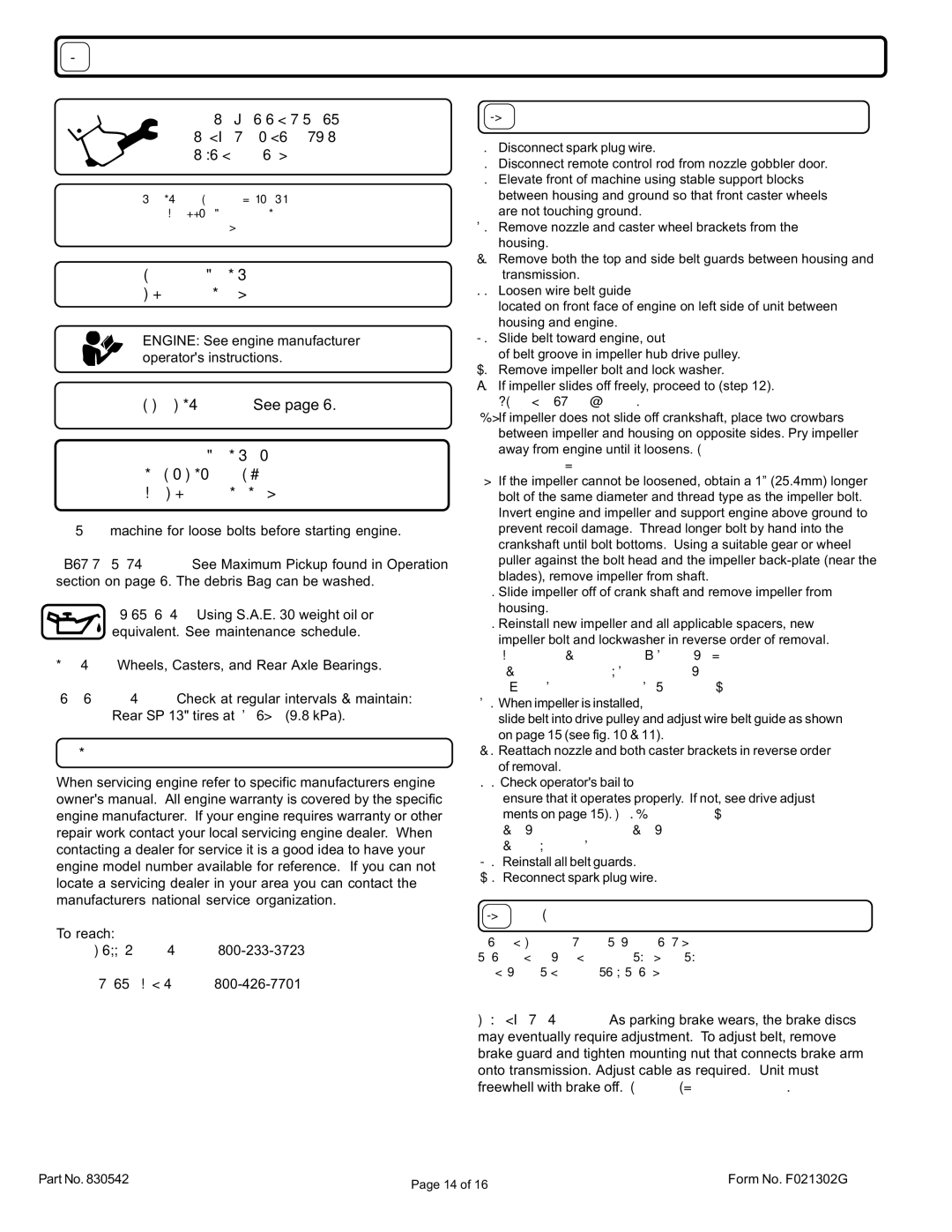VQ1002SP, VQ802SPH specifications
The Billy Goat VQ1002SP and VQ802SPH are innovative and powerful solutions in the world of outdoor clean-up and landscaping equipment. Designed primarily for commercial and residential use, these vacuum systems are engineered to handle a variety of debris, ensuring that users can maintain a clean and pristine environment effortlessly.The VQ1002SP model is powered by a robust 10.0 HP engine, delivering exceptional suction performance. This machine is perfect for larger properties and jobs where heavy-duty clean-up is necessary. Its unique design features a large intake opening, allowing it to collect leaves, grass, and even small debris with ease. Equipped with a 39-gallon debris bag, the VQ1002SP minimizes the frequency of emptying, enabling users to work more efficiently and effectively.
On the other hand, the VQ802SPH model offers slightly smaller dimensions but is packed with powerful capabilities. With an 8.0 HP engine, this model strikes a balance between power and portability. The VQ802SPH is particularly user-friendly, making it an excellent choice for homeowners or professional landscapers who need a more compact solution without sacrificing performance. Its lightweight design and versatile features enhance maneuverability, allowing operators to navigate tight spaces with confidence.
Both models incorporate advanced vacuum technology, including an innovative impeller system that maximizes air volume while minimizing clogs. This ensures consistent performance and reliability even when challenged with dense debris. Furthermore, the use of durable, high-quality materials means that both vacuum systems are built to withstand rigorous use in various weather conditions.
Safety and convenience have been prioritized in the design of the VQ1002SP and VQ802SPH, featuring ergonomic handles for comfortable operation and dependable controls for ease of use. Additionally, both models come with quick-release bag systems, simplifying the process of disposing of collected debris.
In conclusion, the Billy Goat VQ1002SP and VQ802SPH vacuum systems standout in the landscaping equipment market due to their powerful engines, advanced suction technology, and user-friendly design. Whether managing a large commercial property or tending to a modest garden, these vacuum systems provide reliable performance, durability, and versatility to meet a wide range of needs.

